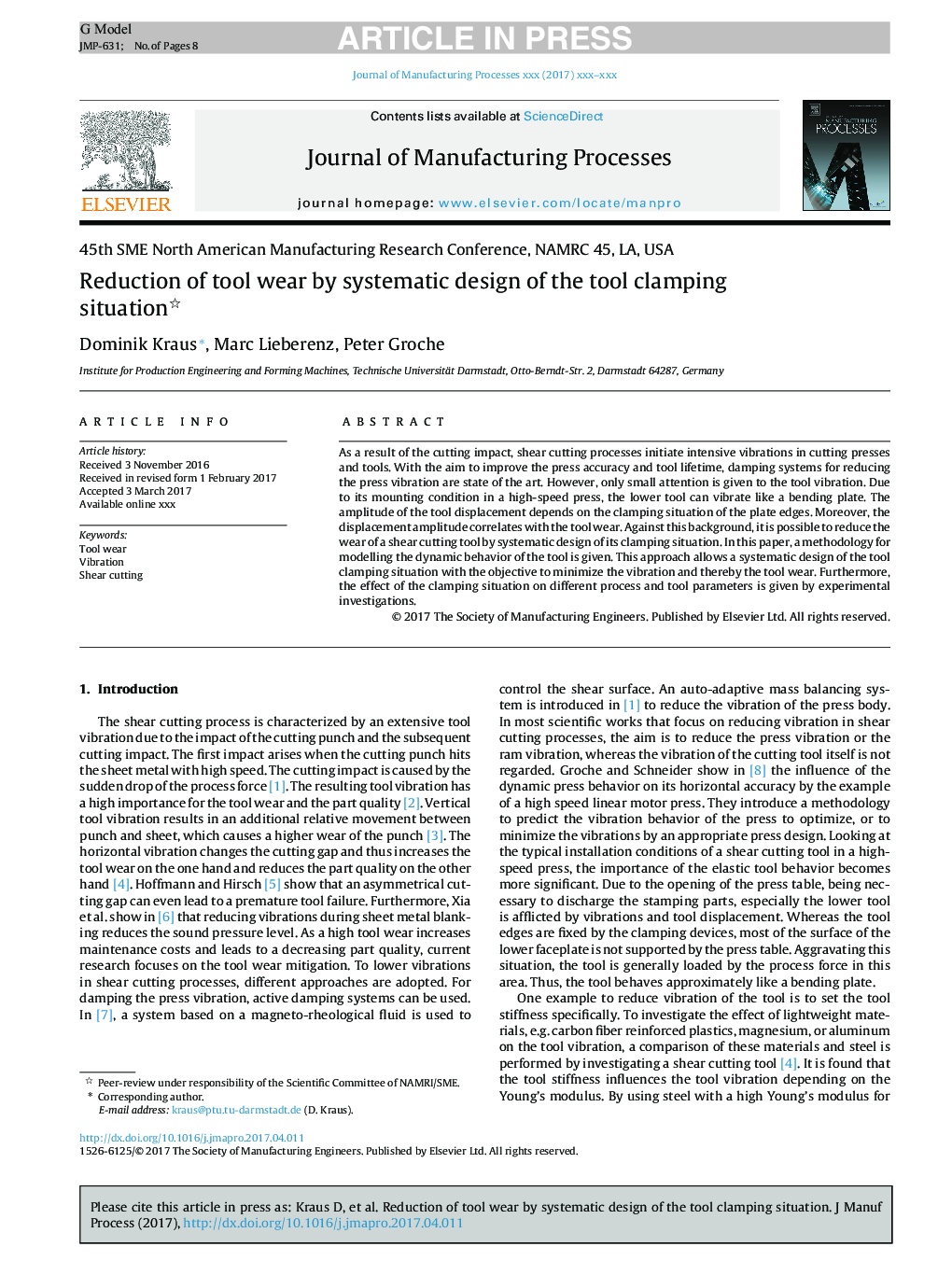| Article ID | Journal | Published Year | Pages | File Type |
|---|---|---|---|---|
| 5469249 | Journal of Manufacturing Processes | 2017 | 8 Pages |
Abstract
As a result of the cutting impact, shear cutting processes initiate intensive vibrations in cutting presses and tools. With the aim to improve the press accuracy and tool lifetime, damping systems for reducing the press vibration are state of the art. However, only small attention is given to the tool vibration. Due to its mounting condition in a high-speed press, the lower tool can vibrate like a bending plate. The amplitude of the tool displacement depends on the clamping situation of the plate edges. Moreover, the displacement amplitude correlates with the tool wear. Against this background, it is possible to reduce the wear of a shear cutting tool by systematic design of its clamping situation. In this paper, a methodology for modelling the dynamic behavior of the tool is given. This approach allows a systematic design of the tool clamping situation with the objective to minimize the vibration and thereby the tool wear. Furthermore, the effect of the clamping situation on different process and tool parameters is given by experimental investigations.
Keywords
Related Topics
Physical Sciences and Engineering
Engineering
Industrial and Manufacturing Engineering
Authors
Dominik Kraus, Marc Lieberenz, Peter Groche,
